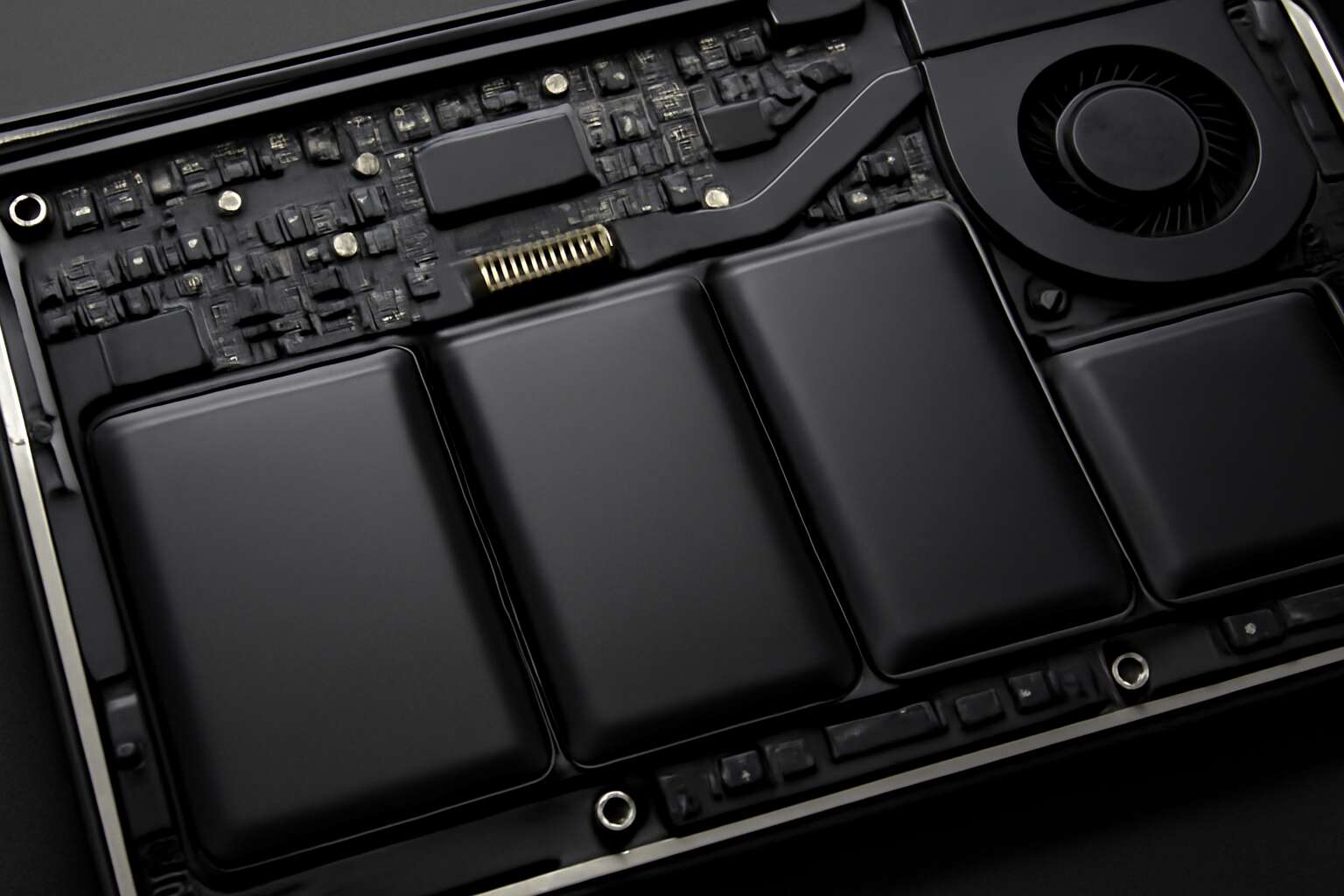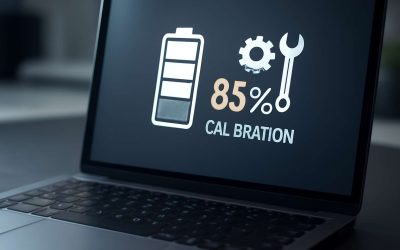Understanding Laptop Battery Hardware Components
Battery Cells – Types of cells used in laptop batteries and their characteristics
Within the enigmatic world of laptop battery hardware, the core component—battery cells—dictates performance and longevity. These cells are the heart of every rechargeable battery, transforming chemical energy into the power that fuels your device. Different types of cells come with their own character, each tailored for specific needs and durability.
Lithium-ion cells reign supreme in modern laptops, known for their high energy density and lightweight design. They offer an impressive balance of capacity and lifespan, making them the go-to choice for most manufacturers. Meanwhile, lithium-polymer cells, a close cousin, excel in flexibility, allowing for sleeker designs and even more efficient space utilization.
Understanding these fundamental components reveals the intricate craftsmanship behind laptop battery hardware. As technology advances, the quest for longer-lasting, safer batteries continues—yet the essence remains rooted in the chemistry of the cells themselves. Here’s a quick glance at the types of cells used:
- Lithium-ion (Li-ion): High energy density, longer cycle life
- Lithium-polymer (LiPo): Flexible shape, lightweight
- Nickel-metal hydride (NiMH): Less common, more durable under certain conditions
Each type’s unique characteristics shape how a laptop battery hardware performs, ensuring power stays reliable when it’s needed most—and sometimes, in the most unexpected moments.
Battery Management System (BMS) – Role of BMS in monitoring and protecting battery health
Amidst the shimmering realm of laptop battery hardware, the unsung hero that guards the longevity and safety of your device is the Battery Management System (BMS). This intricate network acts as a vigilant sentinel, constantly monitoring the pulse of each cell, ensuring they operate within safe parameters. Think of it as the wise guardian of a mystical fortress, preventing overcharges, deep discharges, and thermal runaway—threats that could otherwise transform your prized device into a smoldering ruin.
In essence, the BMS is a complex brain that communicates with the laptop battery hardware, orchestrating a symphony of protection and performance. It evaluates voltage, current, and temperature, making real-time decisions to prolong battery life and safeguard against hazards. Here’s a glimpse into its vital duties:
- Balancing cell charge to prevent uneven wear
- Detecting faults or anomalies within the battery
- Controlling charging and discharging processes
Without this mystical guardian, the delicate chemistry within each cell would be vulnerable to chaos, risking both the device’s lifespan and user safety. As the quest for more powerful and reliable laptops continues, the role of the BMS in the overarching landscape of laptop battery hardware remains indispensable—an invisible protector, tirelessly working behind the scenes to keep your digital world alive and thriving.
Connectors and Terminals – Types of connections and their importance in hardware integrity
In the intricate dance of laptop battery hardware, connectors and terminals serve as the vital arteries that sustain the flow of power. These seemingly modest components hold profound importance in maintaining the integrity and performance of your device’s energy core. Without robust, well-designed connections, even the most advanced battery cells risk disconnection or short-circuiting—threats that could compromise both safety and longevity.
Connections come in various forms, each tailored to specific roles within the hardware ecosystem. For example, soldered terminals forge a permanent bond, ensuring stability over time, while plug-in connectors facilitate assembly and maintenance. An understanding of these types of connections underscores their significance in safeguarding the delicate chemistry of your laptop battery hardware. Here’s a quick overview of common connection types:
- Wire connectors for flexible, high-current pathways
- Pin headers for modular assembly and repair
- Soldered joints that provide durability and minimal resistance
In the pursuit of optimal performance, the integrity of these connections isn’t just technical minutiae—it’s the foundation of safety, efficiency, and durability. When the connection points are compromised, the entire battery system becomes vulnerable, risking sudden failures or thermal issues. In essence, these tiny but mighty hardware components are the silent guardians of your laptop’s power ecosystem, ensuring that energy flows seamlessly within the complex architecture of the laptop battery hardware.
Circuitry and Internal Wiring – Design considerations for safe and efficient power transfer
Behind every reliable laptop battery hardware is a complex web of circuitry and internal wiring designed for safe and efficient power transfer. These components form the backbone of your device’s energy system, ensuring energy flows smoothly from cells to your screen. Proper design minimizes resistance, reduces heat generation, and enhances overall battery lifespan. Every wire and circuit must be meticulously engineered to prevent short circuits and thermal runaway, which can be catastrophic. In addition, the internal wiring layout impacts how evenly power is distributed across the battery cells, avoiding uneven wear that shortens battery life. When manufacturing or repairing, attention to detail in the circuitry and wiring can make all the difference between a stable, long-lasting battery and one prone to failure. Remember, the integrity of your laptop battery hardware depends on these unseen, yet vital, internal connections.
Types of Laptop Battery Hardware Technologies
Lithium-Ion Batteries – Benefits and typical use cases
Within the shadowed realm of laptop battery hardware, Lithium-Ion batteries reign supreme—an unassuming marvel of modern engineering cloaked in quiet efficiency. Their allure lies in a delicate dance of energy density and longevity, making them the preferred choice for those who crave relentless power without the burden of weight. These batteries excel in portable devices, where every ounce and every watt matter, offering a stability that defies the chaos of daily use.
Amidst the gothic corridors of hardware technology, Lithium-Ion batteries stand as sentinels of endurance, capable of sustaining intense workloads while minimizing deterioration. Their benefits extend beyond mere capacity; they feature rapid charging, low self-discharge, and a refined cycle life that beckons to professionals seeking reliability in every keystroke and flicker of the screen. In the dark tapestry of laptop battery hardware, they are the silent guardians of productivity.
Lithium Polymer Batteries – Advantages over traditional lithium-ion batteries
Among the myriad innovations in laptop battery hardware, Lithium Polymer batteries have carved out a niche that’s hard to ignore. Unlike traditional lithium-ion batteries, lithium polymer (LiPo) batteries are celebrated for their flexibility and lightweight design, making them ideal for sleek, ultraportable laptops. Their construction allows for a more versatile form factor—thin, curved, and seamlessly integrated into modern device architectures—without sacrificing power or performance.
One of the standout advantages of lithium polymer batteries over their lithium-ion cousins is their enhanced safety profile. The solid or gel-like electrolyte reduces the risk of leaks or swelling, a common concern with traditional lithium-ion batteries. This robustness translates into a longer lifespan and greater durability, especially in environments where ruggedness and reliability are paramount.
Furthermore, lithium polymer technology enables faster charging times and improved energy density. For professionals on the go, this means less downtime and more productivity. When considering high-performance laptop battery hardware, lithium polymer batteries offer a compelling advantage—delivering consistent, reliable power with a touch of modern sophistication.
Solid-State Batteries – Emerging technology and potential hardware benefits
Emerging technology in the realm of laptop battery hardware promises to redefine our relationship with portable power. Among the most compelling innovations is the advent of solid-state batteries—an evolution that could eclipse current lithium-ion and lithium polymer options. Unlike traditional batteries, solid-state variants utilize a solid electrolyte, which dramatically enhances safety and energy density. This shift isn’t just incremental; it’s revolutionary, offering the potential for thinner, lighter, and more resilient devices.
The advantages extend beyond mere form factor. Solid-state batteries boast a longer lifespan, reduced risk of thermal runaway, and faster charging capabilities—traits that resonate deeply in a fast-paced world where efficiency is king. For those who demand unwavering reliability from their laptop battery hardware, these batteries could become the new standard, promising a future where power interruptions are mere relics of the past.
Hardware Design and Construction of Laptop Batteries
Battery Pack Configuration – Series vs. parallel arrangements
The architecture of laptop battery hardware is a marvel of engineering precision—balancing power, safety, and longevity in a delicate dance. When designing a battery pack, the choice between series and parallel configurations becomes pivotal. Series arrangement increases voltage by connecting cells end-to-end, making it ideal for high-power demands. Conversely, parallel configurations boost capacity, allowing for longer usage times without sacrificing voltage. Understanding this distinction is essential for optimizing hardware performance and ensuring the battery can meet the demands of modern laptops.
In many cases, manufacturers combine both configurations within a single battery pack, creating hybrid arrangements that leverage the strengths of each. This approach demands meticulous hardware design, especially in the circuitry and internal wiring of the laptop battery hardware, to prevent overcurrent issues and ensure uniform charge distribution. The careful integration of these configurations, along with robust connectors and terminals, ensures a seamless power transfer—crucial for maintaining battery health and device reliability. Ultimately, the hardware design intricacies of laptop batteries underscore the delicate balance required to power today’s portable tech seamlessly and safely.
Materials Used – Electrode and separator materials and their impact on durability
The durability of a laptop battery hinges on the meticulous selection and craftsmanship of its materials—each component playing a vital role in its resilience and performance. Central to this is the choice of electrode materials, which must strike a delicate balance between energy density and longevity. Lithium cobalt oxide, for example, offers high capacity but can degrade faster, while lithium iron phosphate provides a sturdier lifespan, albeit with slightly less power. The separator, a seemingly humble yet crucial element, prevents internal short circuits by maintaining a safe distance between electrodes. Its composition—often a porous polymer—directly influences the battery’s safety and lifespan.
When engineered with precision, these materials forge a resilient backbone for the laptop battery hardware, capable of enduring countless charge cycles. The internal circuitry and wiring are designed to optimize current flow, safeguarding against overheating and overcurrent scenarios. In essence, the harmony between electrode and separator materials, combined with robust internal construction, is what transforms a simple collection of cells into a powerhouse of reliability and endurance.
- Electrode materials determine the energy capacity and stability of the battery.
- Separator materials impact safety, preventing dangerous internal shorts.
- High-quality internal wiring ensures consistent power transfer and durability.
Form Factor and Size – Design considerations for portability and performance
The design and construction of laptop battery hardware is an intricate dance between form and function, where every millimeter and material choice influences portability and performance. In South Africa’s dynamic tech landscape, balancing these aspects is crucial to meet the needs of both professionals and casual users alike. A compact, lightweight form factor enhances mobility, yet it must not compromise the battery’s ability to sustain prolonged use under demanding conditions.
Engineers meticulously craft the physical dimensions of laptop batteries to optimize space without sacrificing capacity. This involves selecting a precise combination of battery cells, internal circuitry, and cooling mechanisms. For instance, slim profiles are often achieved through advancements in lithium polymer batteries, which allow for flexible shapes and reduced size while maintaining high energy density. The internal wiring and connectors are also streamlined, reducing bulk and ensuring reliable power transfer across the entire system.
Furthermore, the hardware design must incorporate robust safety features—such as reinforced separator materials and thermal management systems—to prevent overheating and internal shorts. In essence, the harmony of these design considerations culminates in a laptop battery that seamlessly marries portability with resilient performance, embodying the very essence of innovative laptop battery hardware.
Charging and Discharging Hardware Considerations
Charging Ports and Connectors – Hardware aspects of power input interfaces
Within the intricate realm of laptop battery hardware, the design and quality of charging ports and connectors are crucial for ensuring seamless power flow and longevity. These hardware components serve as the vital gateway through which electrical energy enters the battery, making their robustness and compatibility paramount. A well-engineered charging port not only guarantees efficient energy transfer but also minimizes wear and tear over time, which is essential given the frequent plugging and unplugging common in daily usage.
Understanding the hardware considerations of charging and discharging processes reveals the importance of specialized hardware aspects. For example, the type of connector—be it USB-C, barrel jack, or proprietary—can influence charging speed and safety. In the realm of laptop battery hardware, manufacturers often incorporate intelligent circuitry to regulate the charging cycle, preventing overcharge and discharging when the battery reaches critical levels. This integrated approach extends the lifespan of the battery and maintains optimal performance, which is especially vital for users relying heavily on their portable devices.
Protection Circuits – Hardware features to prevent overcharge and over-discharge
Within the realm of laptop battery hardware, safeguarding the delicate dance of power flow is paramount. Protection circuits act as vigilant guardians, preventing the perilous risks of overcharge and over-discharge—two silent killers of battery longevity. These hardware features are designed with precision, ensuring that electrical energy ceases to feed the battery once its optimal capacity is reached or when it dips perilously low, thereby averting irreversible damage.
Advanced protection mechanisms often employ a combination of hardware components, such as voltage regulators and temperature sensors, integrated seamlessly within the battery pack. This layered defense ensures that the battery maintains its health over countless charge cycles. In some models, a laptop battery hardware configuration includes a dedicated circuit that monitors real-time data, swiftly disengaging power flow if anomalies arise. Such intelligent circuitry preserves the integrity of the battery, especially vital for those who rely heavily on their portable devices daily.
- Overcharge Protection: Stops the flow of electrical current once the battery reaches full capacity.
- Over-discharge Prevention: Cuts off power when the battery dips below a safe threshold, avoiding cell degradation.
- Thermal Regulation: Monitors temperature fluctuations to prevent overheating, which can compromise hardware and safety.
In the grand tapestry of laptop battery hardware, protection circuits are the unseen custodians—ensuring that each charge and discharge cycle is a testament to durability and safety, allowing users to navigate their digital lives with confidence and grace.
Temperature Sensors – Role in hardware safety and performance management
Temperature sensors are the unsung heroes within laptop battery hardware, tirelessly working behind the scenes to safeguard your device’s longevity. These miniature guardians constantly monitor the internal temperature, ensuring that the battery operates within safe thermal limits. Overheating can accelerate chemical degradation, diminish capacity, and even pose safety risks—a scenario no user wants to face.
Advanced laptop battery hardware integrates thermal regulation systems that respond rapidly to temperature fluctuations. When sensors detect rising heat, the system may reduce charging speed or temporarily halt power flow, preventing overheating. This dynamic response preserves not only the hardware but also maintains optimal performance during intense tasks or prolonged use.
In fact, many modern laptops employ layered thermal management strategies, including:
- Dedicated temperature sensors embedded within the battery pack
- Intelligent circuitry that adjusts power delivery based on sensor data
- Cooling mechanisms synchronized with thermal readings
By incorporating these sophisticated thermal regulation features, laptop manufacturers ensure that the delicate balance of power flow remains stable, prolonging battery lifespan and enhancing safety. Such meticulous attention to hardware detail demonstrates how critical temperature sensors are within the broader landscape of laptop battery hardware—an essential component that quietly upholds device reliability and user confidence every single day.
Common Hardware Issues and Failures
Cell Degradation – Hardware signs and causes
In the vast realm of laptop battery hardware, few issues evoke more concern than cell degradation—a silent thief of power and performance. Over time, the internal chemical processes within battery cells falter, leading to diminished capacity and shorter runtime. This deterioration is often caused by repeated charge cycles and exposure to extreme temperatures, which accelerate the breakdown of electrode materials and separators. The subtle signs of cell degradation include swelling, reduced voltage stability, and inconsistent power delivery, all whispering warnings of impending hardware failure.
Understanding these signs is crucial for preemptive intervention. As the core of laptop battery hardware, the cells are interconnected within the battery pack. When one cell begins to fail, it can cascade into a broader failure, affecting the entire system’s stability. In some cases, damaged cells may even cause the battery to overheat, risking permanent hardware damage or safety hazards.
Monitoring the health of battery cells is vital, often facilitated by protection circuits and temperature sensors embedded within the hardware. These components act as guardians, preventing catastrophic failures and extending the lifespan of the laptop battery hardware. Recognizing early signs of cell degradation ensures that users can seek timely repairs or replacements, preserving both performance and safety in the world of portable computing!
Connector Failures – Symptoms and repair considerations
Few hardware issues can cause as much frustration as connector failures within laptop battery hardware. When the physical connection between the battery and the device weakens or becomes loose, power delivery becomes inconsistent, leading to abrupt shutdowns or failure to charge altogether. This subtle yet persistent problem often sneaks under the radar, manifesting as flickering battery icons or failure to recognize the power source.
Symptoms of connector failure are often straightforward: intermittent charging, difficulty in maintaining a charge, or the battery not appearing in system diagnostics. Repair considerations include inspecting the integrity of the connector pins and ensuring secure, corrosion-free contact points. In some cases, a simple re-soldering or replacement of the connector can restore the hardware’s harmony, prolonging the life of the laptop battery hardware. Recognizing these signs early can prevent more complex, costly issues down the line, safeguarding both performance and safety.
Ultimately, the delicate dance of hardware connections underscores the importance of meticulous design and maintenance. When connector failures occur, they serve as a reminder that in the realm of laptop battery hardware, even the smallest component plays a pivotal role in sustaining power and reliability.
Hardware Short Circuits – Prevention and detection
In the wild world of laptop battery hardware, one gremlin lurks more mischievously than most: hardware short circuits. These sneaky interruptions can wreak havoc on your device’s power system, often manifesting as sudden shutdowns or erratic charging behavior. Detecting such issues early is crucial—think of it as a hardware health check-up before your laptop turns into an expensive paperweight.
Prevention begins with understanding the enemy. Over time, dust, moisture, and physical damage can cause unintended electrical pathways—short circuits—that threaten to fry your laptop’s innards. Regular inspection of internal wiring and circuitry is the best armor. When symptoms like overheating, sparks (yes, sparks!), or burnt smells appear, it’s time for a serious hardware audit.
To spot hardware short circuits, technicians often employ multimeters and thermal imaging—tools that reveal hidden hotspots and electrical anomalies. An ordered approach, like systematically checking the circuitry and verifying insulation integrity, can save a hefty repair bill and prolong your laptop battery hardware’s lifespan. Remember, a well-maintained circuit is the backbone of reliable power delivery and device longevity.
Future Trends in Laptop Battery Hardware
Hardware Miniaturization – Smaller, more efficient components
As technology advances, the future of laptop battery hardware is set to become even more compact and efficient. Miniaturization plays a pivotal role here, allowing manufacturers to develop smaller components that deliver greater power density and longer lifespan. This shift not only enhances portability but also reduces the environmental impact, as fewer materials are needed for manufacturing. Innovations like solid-state batteries exemplify this trend, promising hardware benefits such as faster charging times and improved safety.
With the ongoing push for better performance, expect to see a surge in the integration of advanced circuitry and internal wiring designed specifically for optimized power transfer. These developments will likely streamline hardware architecture, reducing unnecessary bulk and improving overall reliability. Additionally, new materials used in electrode and separator construction are paving the way for more durable and resilient battery hardware. The combination of these elements signals a future where laptop batteries are not only smaller but also smarter and more sustainable.
Integration of Smart Hardware – IoT and AI-driven battery management hardware
In a world where digital connectivity is as vital as the breath we take, the future of laptop battery hardware pulses with an electrifying promise. As artificial intelligence and the Internet of Things (IoT) continue to weave themselves into the fabric of daily life, the integration of smart hardware becomes not just an innovation but a necessity. Imagine batteries that don’t just hold power but understand it — adapting dynamically to usage patterns, optimizing energy flow with intelligent precision.
Emerging trends suggest that we will see a surge in IoT-enabled battery management hardware, capable of real-time diagnostics and predictive maintenance. This heightened awareness ensures longer lifespan and enhanced safety, reducing the risk of hardware failures. Moreover, AI-driven systems will analyze usage behaviors and environmental conditions to fine-tune charging cycles, conserving precious resources and safeguarding the environment.
A prime example of this evolution is the development of advanced protection circuits and temperature sensors embedded directly into the hardware. These elements serve as vigilant sentinels, warding off hardware short circuits and preventing overheating. As the boundaries of laptop battery hardware expand, expect to see a seamless blend of intelligence and resilience, forging a future where batteries are not mere containers of power but active, responsive partners in our digital journeys.
Advanced Materials – Use of novel materials for longer lifespan and performance
The relentless march of innovation has propelled laptop battery hardware into a new era where materials once considered futuristic are now at the forefront. In South Africa’s dynamic tech landscape, the quest for longer-lasting, more resilient batteries is unending—much like a good braai, it’s all about the perfect balance of components. Emerging materials such as silicon anodes, solid electrolytes, and novel separator compounds promise to extend battery lifespan while boosting overall performance. These advanced materials are designed to withstand the rigors of daily use, environmental fluctuations, and the constant demand for power.
Moreover, the integration of cutting-edge electrode and separator materials helps mitigate cell degradation and enhances durability. This means fewer hardware failures and more reliable laptop battery hardware, ready to keep pace with the busy South African professional on the move. As manufacturers experiment with increasingly sophisticated materials, expect innovations like flexible batteries and ultra-thin form factors—imagine a device so sleek it feels like holding a piece of the future.
In the realm of hardware evolution, the push towards solid-state batteries exemplifies the pursuit of safer, more efficient power sources. These batteries, with their solid electrolytes, are less prone to overheating and offer higher energy density. As a result, they could revolutionize portable computing, making the laptop battery hardware not only more resilient but also more environmentally friendly. It’s as if the industry is quietly rewriting the rules of what a battery can truly achieve—longer lifespan, enhanced safety, and performance that’s both reliable and remarkably elegant.




0 Comments